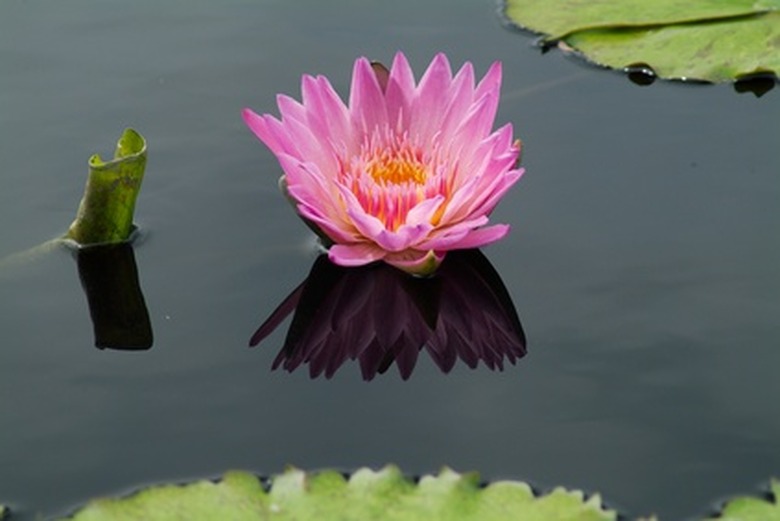How To Clean Water
It is important that the water you drink is clean and free from bacteria and other contaminants as much as possible. The quality of the water that comes out of your tap is likely regulated by a government body and may not necessarily need further purification, depending on your standards. However, there are many sources of water that must be cleaned before consuming. Stagnant water, certain well waters and other sources of unknown origin should always be cleaned before consumption.
Step 1
Clean water by filtering it. Home water treatment devices can be attached to the kitchen faucet or inserted into pitchers to filter water as it pours through the top. Use a filter with an absolute pore size of between 0.1 and 0.4 micrometers if you are concerned about cysts and bacteria in the water supply (a non-issue with municipal American and Canadian tap waters). Read the label before you purchase a water filter, especially in an unfamiliar country. The Environmental Protection Agency defines water purifiers as those that can remove 99 percent of the viral load from the water.
Step 2
Boil water. This method is the most reliable to clean water. The Center for Disease Control recommends boiling possibly contaminated water for 60 seconds at sea level and for 3 minutes at altitudes above 6,500 feet. If you cannot boil water, only use tap water that is too hot to touch. This water is more likely to be hot enough to kill many waterborne pathogens.
Step 3
Disinfect water with chlorine. Chlorine drops or tablets can be purchased online or from certain travel outfitters. The amount of chlorine tablets that you need is dictated by the amount of water you wish to clean and its level of cleanliness (cloudy water requires more chlorine tablets to clean).
Things Needed
- Filter
- Pot
- Heat source
- Chlorine tablets
TL;DR (Too Long; Didn't Read)
Use all three purification methods in conjunction for the best results. Iodine may be used to purify water (five drops per liter of clear water and 10 drops per liter of cloudy water). However, it can cause health problems and should only be used in emergency situations. Add a pinch of absorbic acid (vitamin C) to water treated with chlorine to remove the taste of chlorine and iodine from water.
Warning
Chlorine may not kill some viruses or the parasites that cause Giardiasis, amoebiasis and Cryptosoporidosis.
Cite This Article
MLA
Butler, Meg. "How To Clean Water" sciencing.com, https://www.sciencing.com/clean-water-6559876/. 22 November 2019.
APA
Butler, Meg. (2019, November 22). How To Clean Water. sciencing.com. Retrieved from https://www.sciencing.com/clean-water-6559876/
Chicago
Butler, Meg. How To Clean Water last modified March 24, 2022. https://www.sciencing.com/clean-water-6559876/
